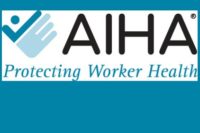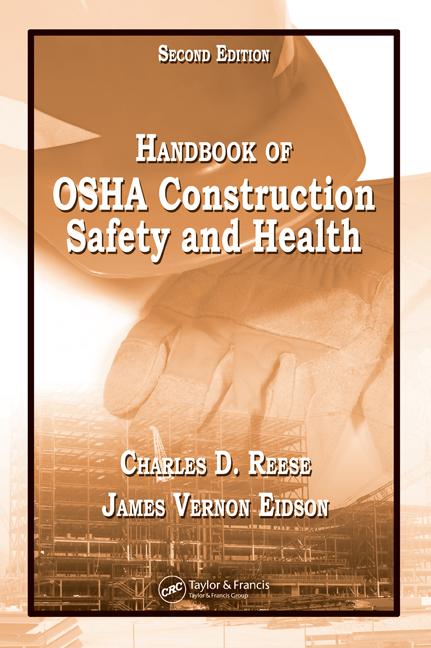OSHA's annotated PELs and OELs

Quiz
Read the scenario, then answer the questions that follow. Scenario: Employer’s objective is compliance with OSHA. Facility is located in a federal OSHA state. OSHA monitors employees and finds TWA exposure to styrene at 62.5 ppm. OSHA’s Annotated PELs for styrene (in parts per million) are shown in Table I.
Questions:
1) No employees show ill effects from exposure to styrene. What is the OSHA compliance limit?
A) 100. B) 50. C) 20. D) None of the above.
2) Dr. diagnoses an employee to have respiratory bronchitis suspected from styrene exposure. What is the OSHA compliance limit?
A) 100. B) 50. C) 20. D) None of the above.
3) Employee has 10 years of styrene exposure and exhibits a significant threshold shift in hearing. What is the OSHA compliance limit?
A) 100. B) 50. C) 20. D) None of the above.
4) Employee is pregnant. What is the OSHA compliance limit?
A) 100. B) 50. C) 20. D) None of the above.
Answer explanations
1) Answer A. If employees do not show ill effects from exposure to a chemical then the federal PEL (in federal OSHA state) is the compliance limit.
2) Answer B. If an employer “knows” that a particular safety or health standard “fails to protect his workers against the specific hazard it is intended to address” then OSHA may cite under section 5(A)(1) of the OSH Act – general duty clause.
3) Answer C, probably. OSHA has yet to cite 5(A)(1) for hearing loss and exposure to styrene but the elements are set up for them to do so. Europe’s Styrene Producers Association, Japan’s Styrene Industry Association, and the Styrene Information and Research Center, supported by the global styrene industry, recommend an OEL at 20 ppm due to concern for hearing loss. The American Composite Manufacturers Association, that represent major users of styrene in the U.S., actively communicate the recommended OEL for styrene at 20 ppm.2
4) Answer A, probably – but should be C (conform to MAK and DNEL at 20 ppm). A letter of interpretation was sent to OSHA’s Directorate of Enforcement Programs in February 2013 asking how an OEL for an unborn child (ref. OSHA HCS Appendix C.4.10) would be enforced. No answer yet. The European Chemicals Agency, Committee for Risk Assessment, proposed in November 2012 to harmonize classification and labelling for styrene to include code H360D.3
Quiz takeaway
• How is an employer to know what PELs besides styrene are “inadequate for ensuring protection of worker health?” What sources of information demonstrate “knowing?”
• OSHA has made the point that employers must be aware of what regulations are outdated and may require better controls.
• Question 4 is a stumper and may be beyond OSHA. Lawyers who have examined OSHA’s push for informational OELs e.g. Annotated PELs, note this action may open the door to tort liability for non-employees.4
• The quiz supports the ACGIH® Policy Statement that TLVs®, and by extension any OEL, “should not be used by anyone untrained in the discipline of industrial hygiene.” How much training is needed to adequately apply IH principles?
• The American Board of Industrial Hygiene, representing about 6,700 people with the CIH designation, encourages industry to be aware of OSHA’s Annotated PELs.5 CIHs are ethically committed to make clients aware of various OELs specific to a worker’s, and maybe non-worker, exposure. Under what conditions does the growing complexity of chemical exposures necessitate CIH involvement?
• An employee’s health condition may necessitate use of different OELs for the same chemical.
Review of a newly revised (November 2013) Safety Data Sheet (SDS) for styrene from a U.S. manufacturer helps demonstrate the complexity of OELs.6 SDS Section 8: Exposure controls/personal protection, required three pages just to list global OELs, including various DNELs, for styrene. You may need a CIH to decipher.
The SDS did not include H360D code, however. This goes back to the questions of knowing. The SDS appears thorough at 34 pages. But what obligation does a user of any SDS have to verify information within an SDS and act on information that is incomplete or missing?
A CIH should have scored 100% on the quiz, 75% passing for all others. Ramp up your IH knowledge if you didn’t pass the quiz.
1. http://www.dol.gov/dol/budget/2014/PDF/CBJ-2014-V2-12.pdf
2. http://acmanet.org/regulatory-compliance/workers-regulatory/17-member-resources/203-more-information-about-workplace-exposure-to-styrene
3. http://echa.europa.eu/documents/10162/8d15e2f2-f510-4e33-a294-a1c1ddc8501c
4. http://www.law360.com/articles/486418/osha-s-voluntary-limits-may-circumvent-current-rules
5. http://www.webwire.com/ViewPressRel.asp?aId=183408#.UuezaRAo6M8
6. http://www.cpchem.com/msds/100000068536_SDS_EU_EN.PDF
Looking for a reprint of this article?
From high-res PDFs to custom plaques, order your copy today!







